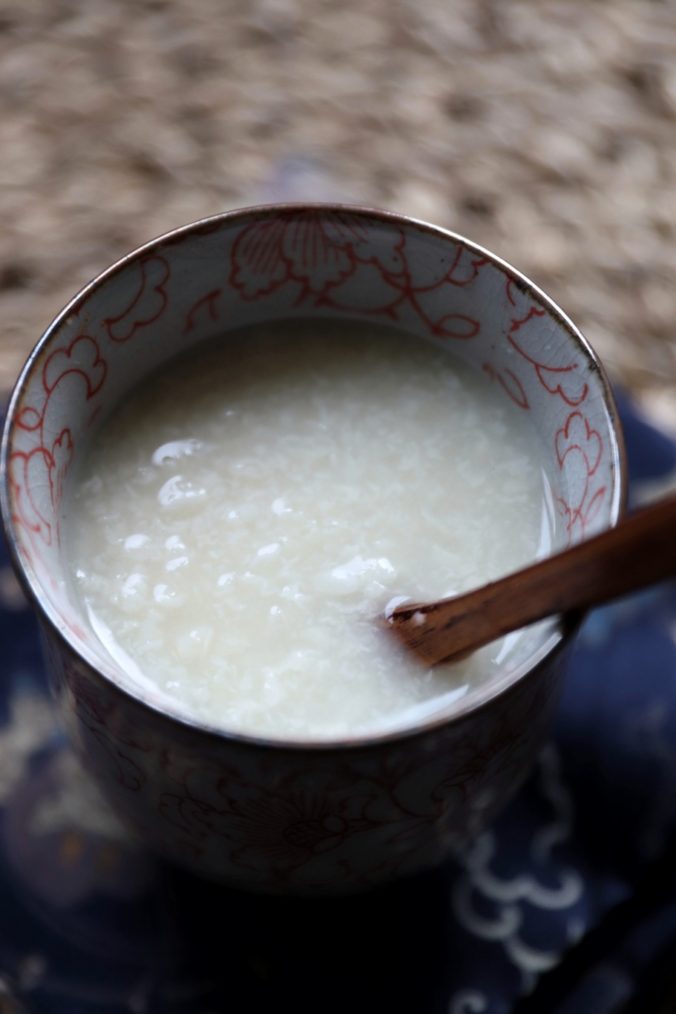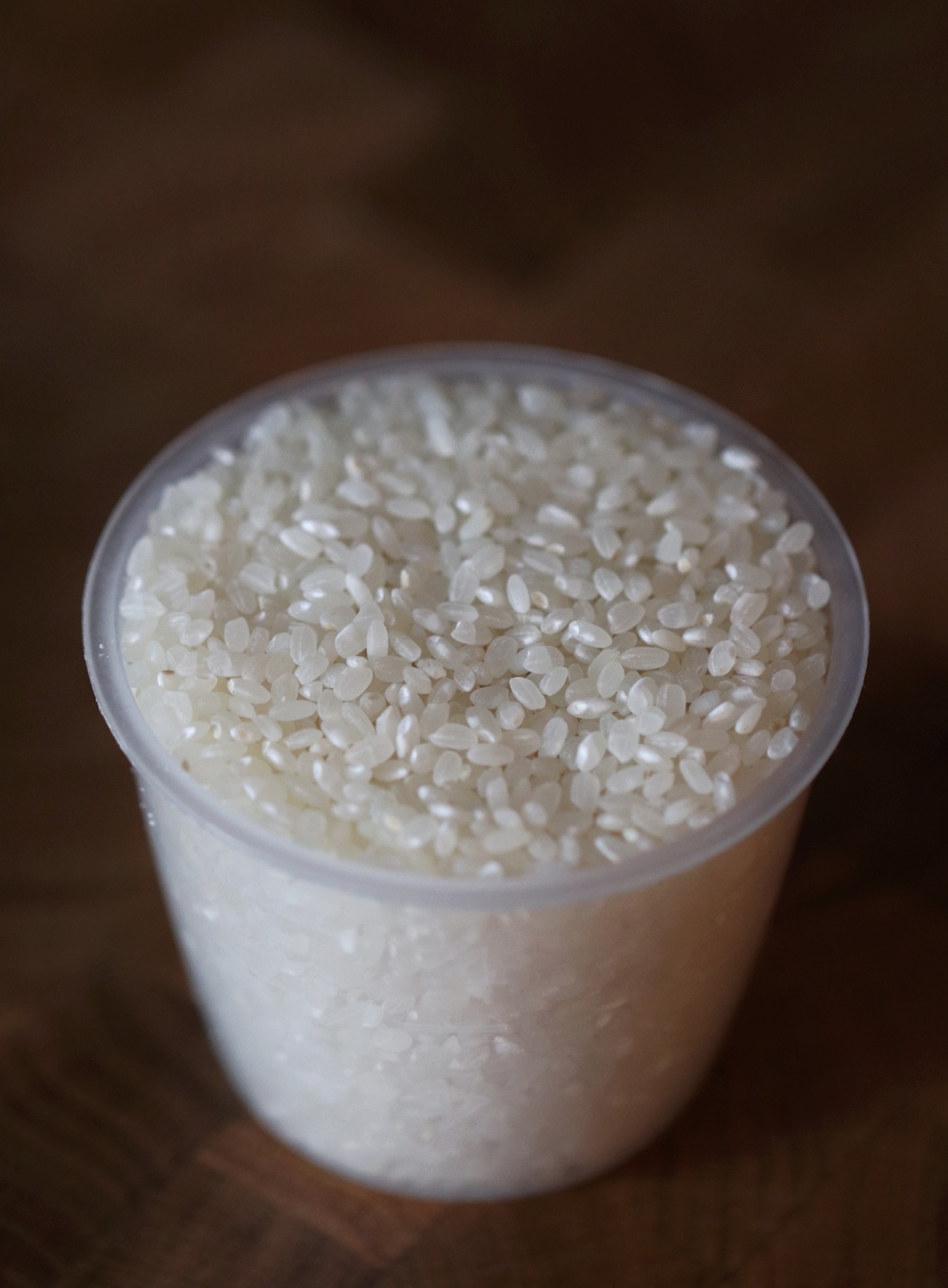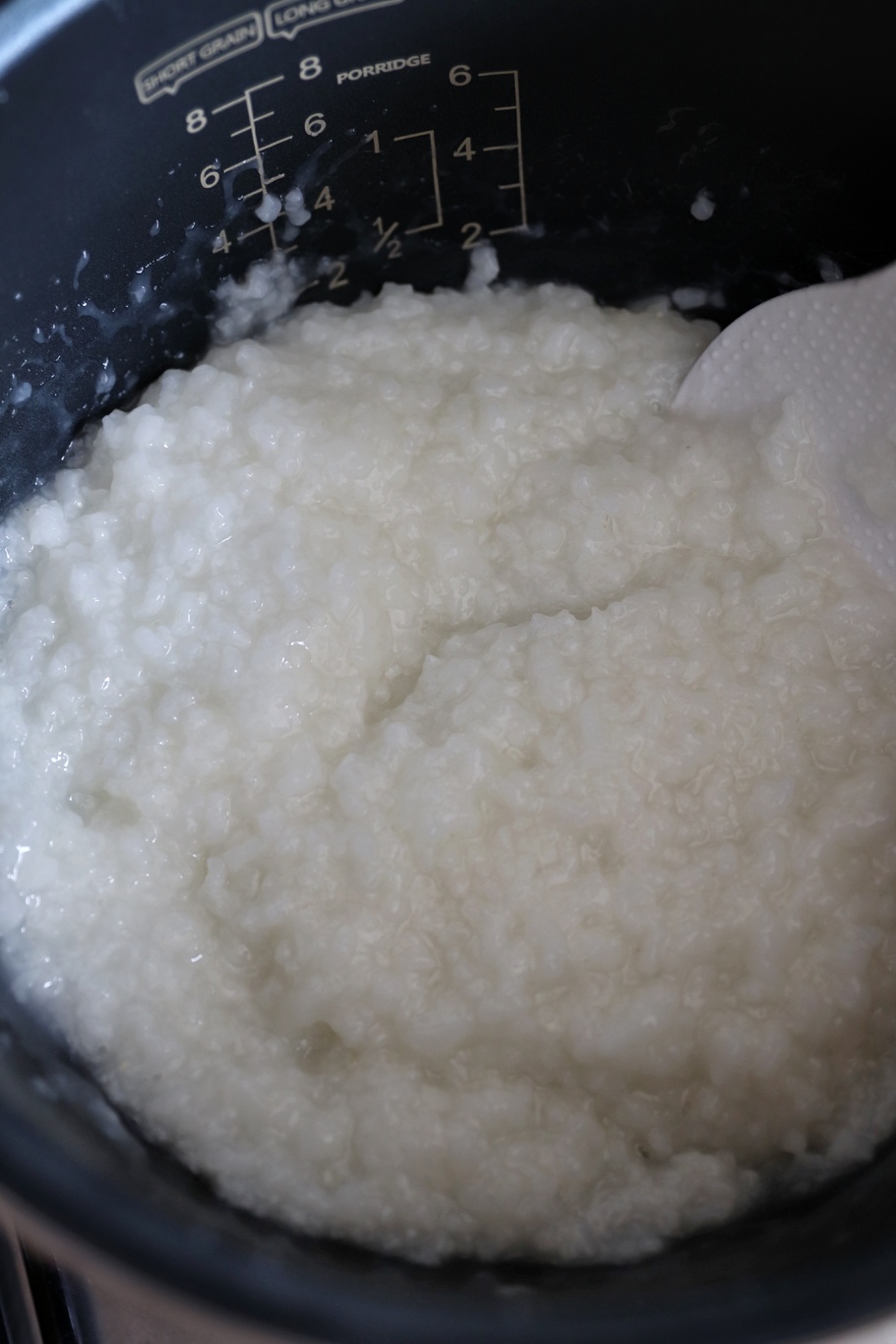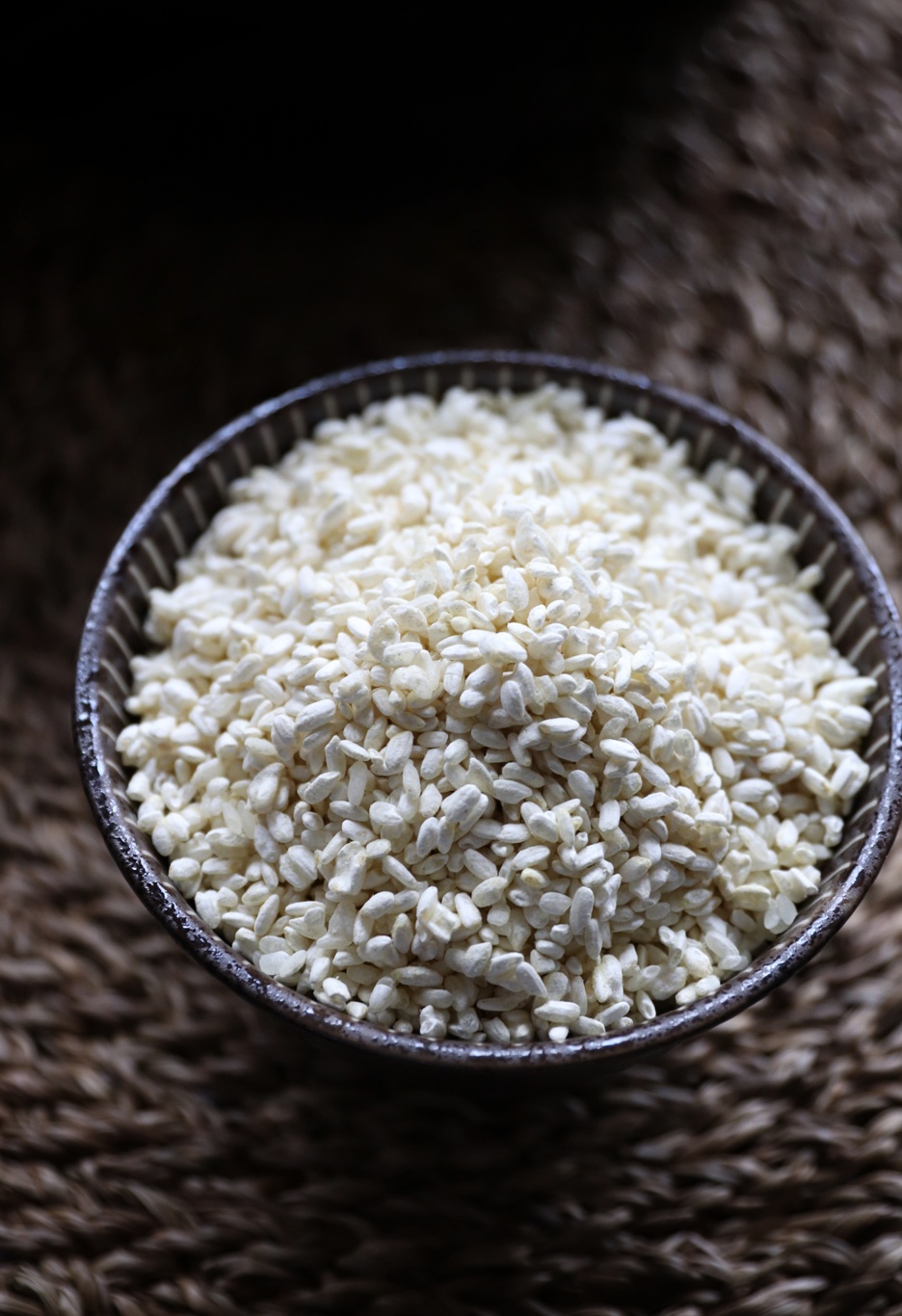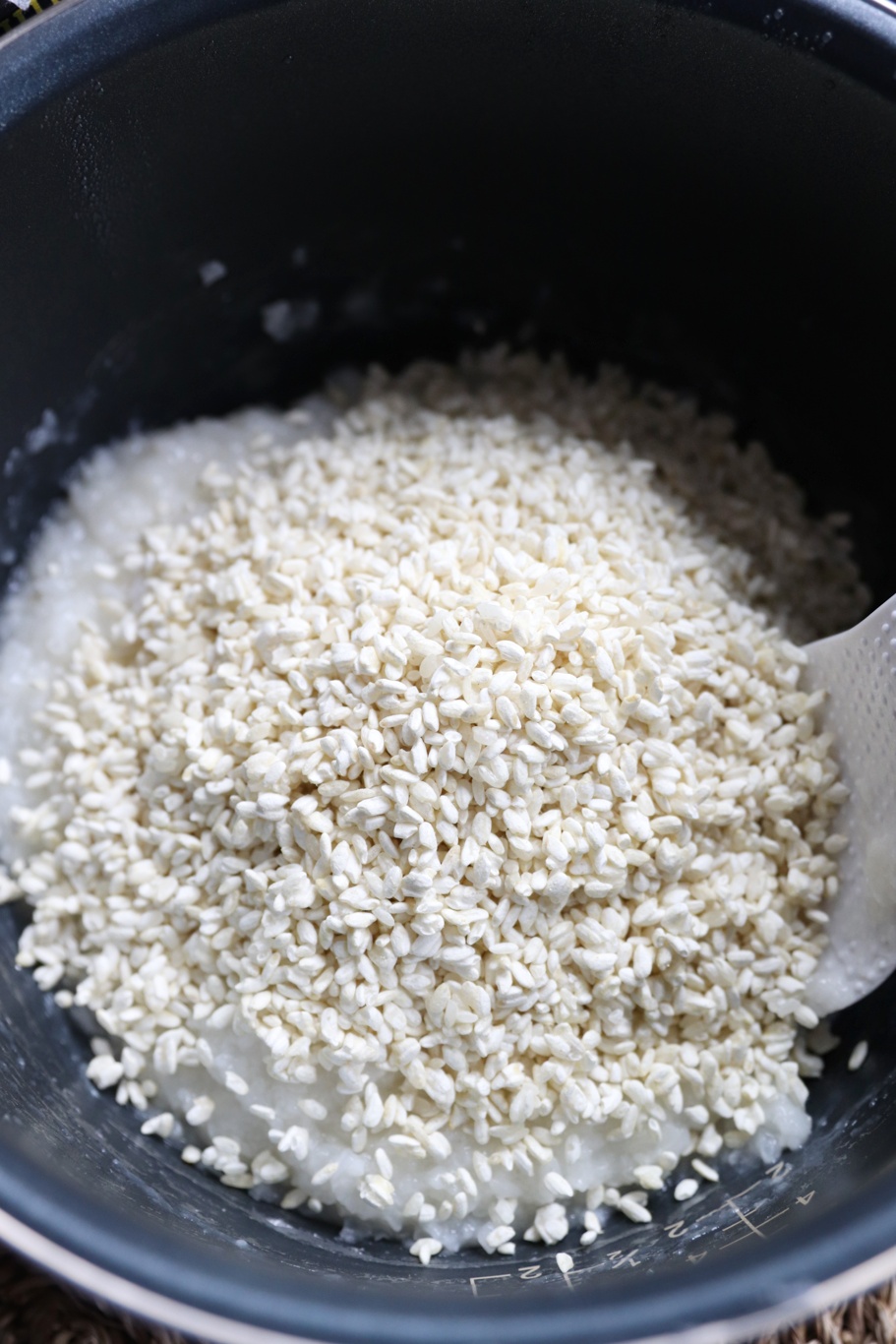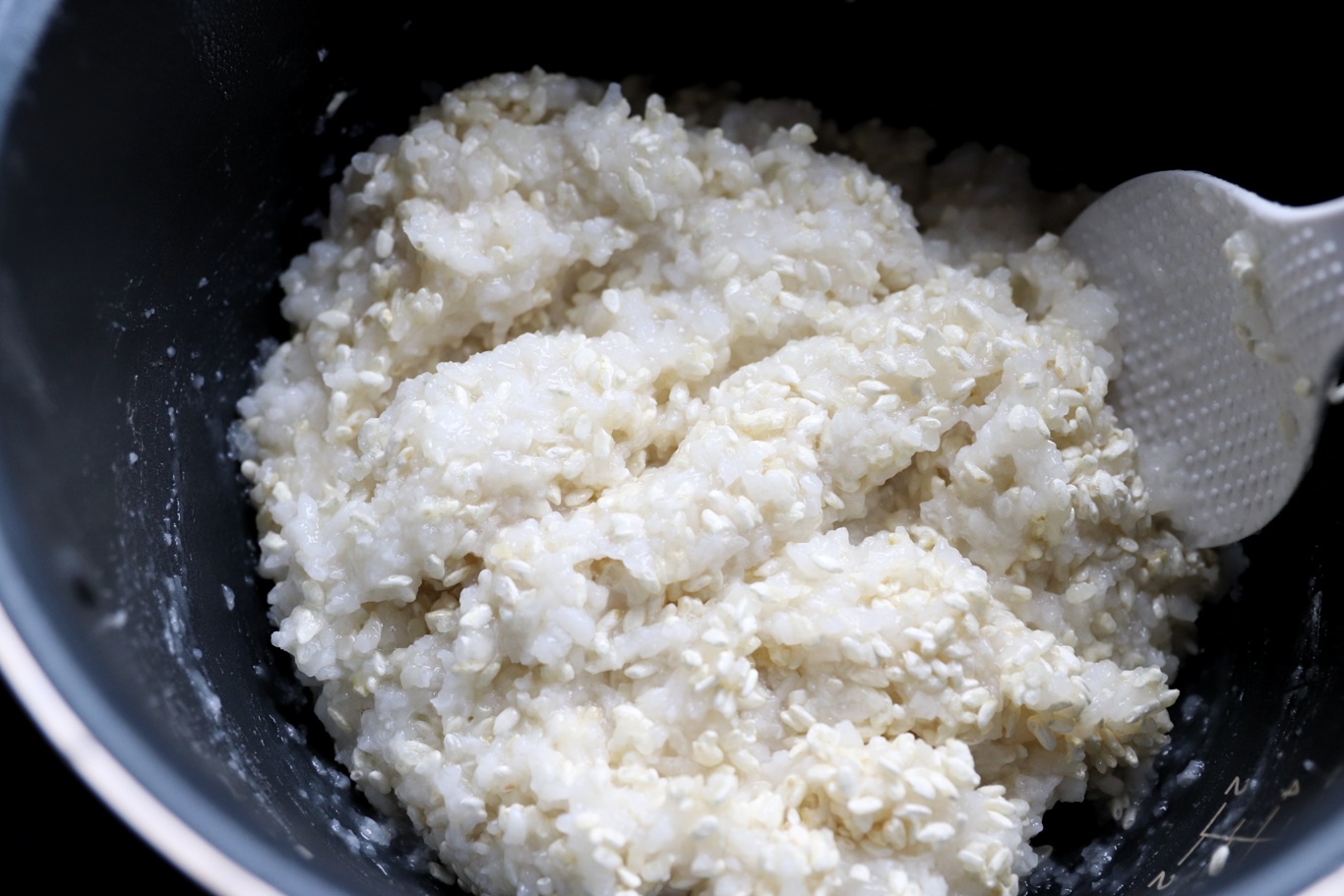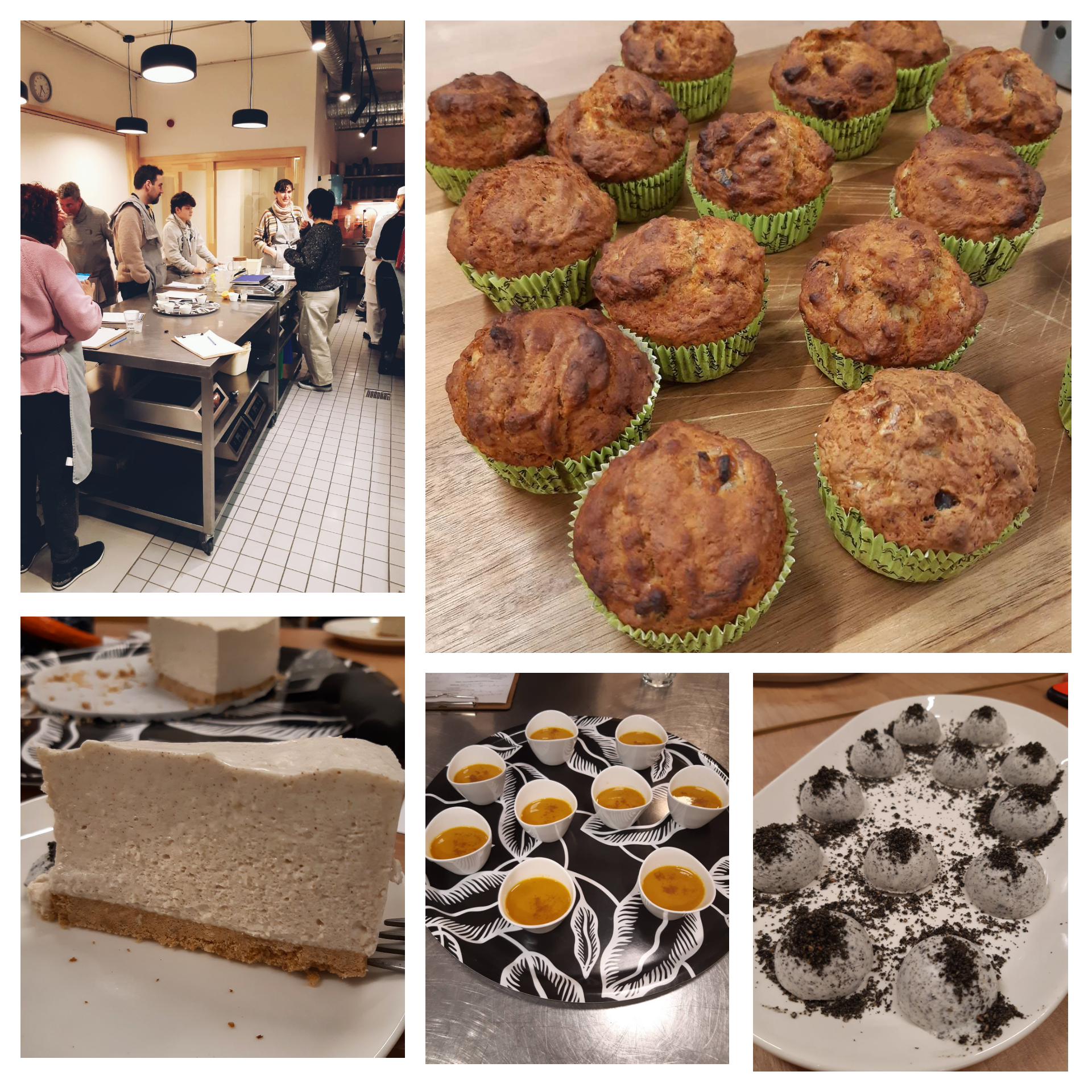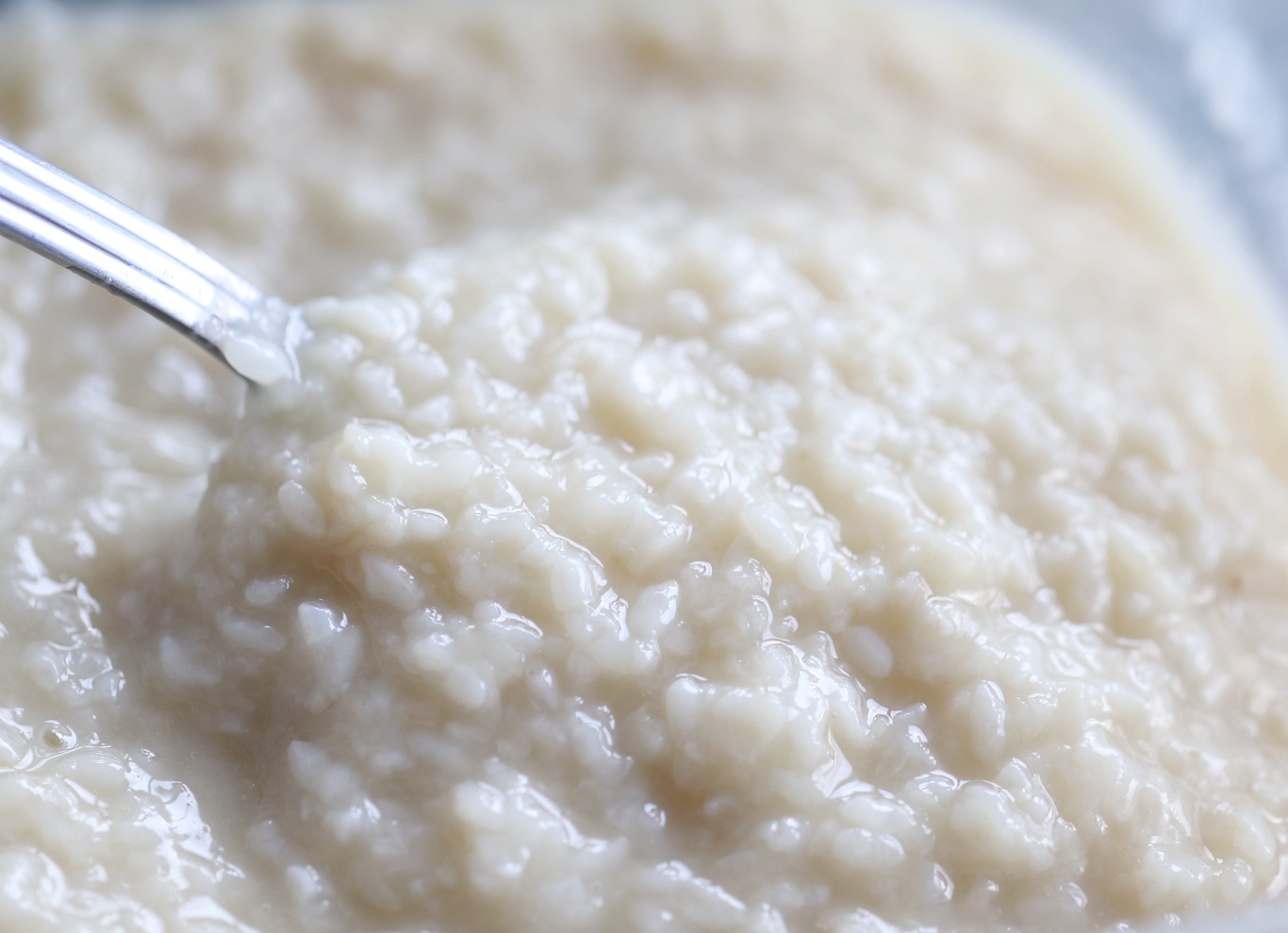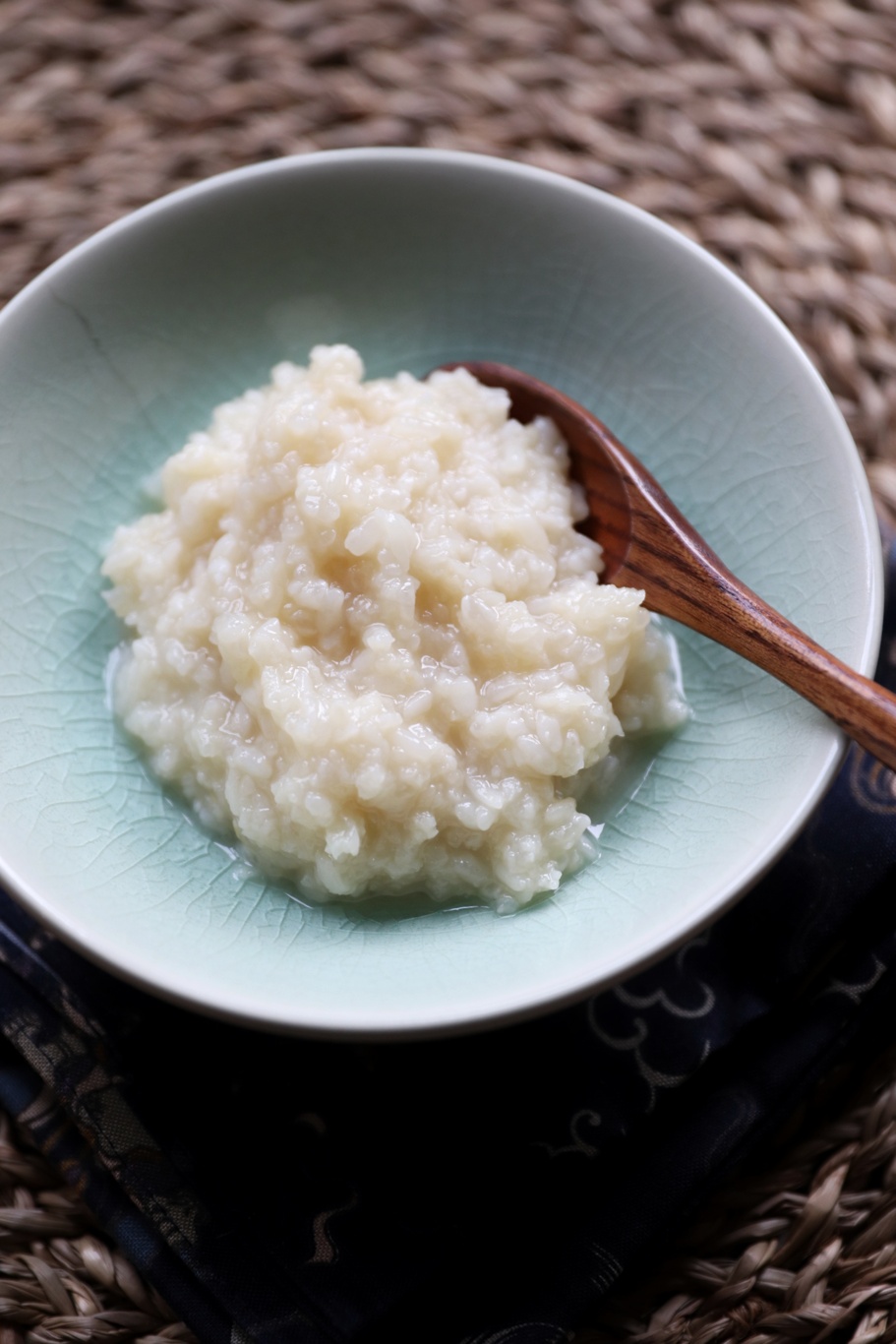My first experience with amazake was in Japan about 2 years ago. We went to visit the Matsumoto samurai castle and after the visit we popped in the gift shop too. I always wanted to try amazake so we bought a small bottle of it that I found in the refrigerated shelf. At that time I had no idea what to expect but I was open for anything. As I found out after I consumed it, that particular type was made with sake kasu and it didn’t became my favourite drink that time.
Sake kasu is the by-product of the Japanese sake brewing which is still rich in enzymes, also contains different microbes, vitamins that is very beneficial for the health. The flavour is slightly sweet, sour and alcoholic from the sake. To make amazake they add water and sugar and normally serve it hot in the winter and cold in the summer.
The other type of amazake is the sweet version which is more common in Japan and in this post I will talk about. It’s “fermented” with koji ( aspergillus oryzae ) under special circumstances. Maybe the word fermented is not the best in here. In this temperature ( 60C ) the Lactic acid bacteria or mold wouldn’t survive. So what really happening is the enzymes particularly the amylase, is breaking down the starch in the rice into glucose or sugar. That’s why it has the beautiful natural sweetness.
Amazake is naturally sweet and it’s very good for your health. It still contains the leftover beneficial enzymes, also vitamins and folic acid. It strengthens the immune system, improving digestion and has anti-aging properties. The cosmetics industry widely use it in different products. Traditionally, consumed on the 3rd of March, to celebrate the Doll festival ( Hina Matsuri ), or some of the Ryokans offering it as a welcome drink.
I started making my own koji for a while now and this is making my life much easier. It’s more economical ( to buying koji rice it can cost you 6-8£/300g ) and I just love the freshly made koji’ s aroma! When I plan to make amazake I make amylase strength koji, which is perfectly brings out the natural sweetness from the rice by the enzymatic reactions ( sacchaification ). For this to happen it needs to be kept in a specific environment, likeenvironment an incubator for 6-10 hours between 50-60 C. Be careful not to bring the temperature higher as the enzymes can be damaged, or if is too low the Lactic acid bacteria can join to the party and it will make it sour.
The making process is very simple, but you will need an “incubator”. I use my rice cooker ( Yum Asia Bamboo ) that has a “keep warm” function, it’s keeping the amazake in the right temperature zone. My other option is my Bread proofer ( Brod & Taylor ) that I also use for making koji.
How I make amazake in the rice cooker
Nearly every time I use Japonica rice to make the rice porridge first. There are some recipes where there is no need for the porridge consistencyis, just cook the rice as you normally would 1:1 ratio ( rice : water ), then add some cold water.
This is my preference, you could find you own way. I use the rice measure cup, so this recipe is not in metric measurements.
Amazake recipe:
- 1 cup of Japonica rice
- 3-4 cups of filtered water
- 2 cups of rice koji ( kome koji )
- First, wash the rice well. Drain it, than along with the 300-400ml water put it in the rice cooker and make a rice porridge. When it’s done, stir it few times to help the temperature drop to between 55-60 C.
- Add the rice koji, then stir it well to incorporate with the porridge. In this stage it may look a bit dry, but in a little time as the enzymes start working will be much more wetter. Switch on the keep warm function and place a clean cloth on top of the rice cooker bowl. Don’t close the lid as it will overheating the amazake and the enzymes will be destroyed.
- Keep going for about 6-8 hours ( or can be longer ), mix it through few time to help distribute the temperature evenly. Try it in different stages to see how is the sweetness developing during the incubation time, and swich of the cooker when you think is sweet enough for you.
Traditionally it is diluted with a bit of warm water and serve it with a small amount of grated ginger. You can use it in different dessert instead of sugar like I did on my amazake workshop last week in Budapest at Makifood Cookery school.
Another idea to use amazake is to make delicious amazake-zuke, which is a type of Japanese tsukemono.
You will only need your favourite vegetable, that can be any type of radish, broccoli, cauliflower, cucumber etc… After washing, salt them in a bowl and put weight on top for overnight. Drain the water and pat dry them. Place them in the amazake “bed” and let is sit in the refrigerator for 3-7 days, it’s depends on the vegetables and your personal liking.
Enjoy!
If you like what I’m doing please follow me on Instagram too! You will find me as Konyhaparade.
